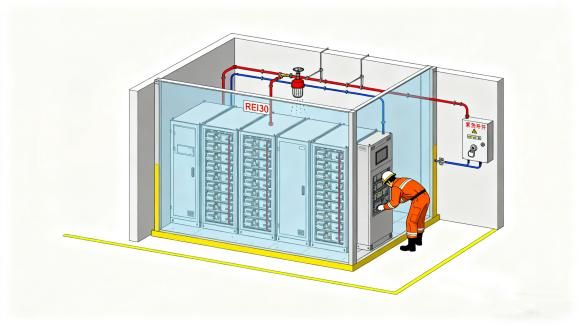
Inquiry
Italy Issues New Fire Safety Guidelines for Solar PV and Storage Systems
Italy’s fire service has introduced new binding guidelines for solar PV and storage systems, setting detailed requirements on spacing, compartmentalization, maintenance, and battery storage safety.
Strengthening Fire Protection for Renewable Energy Systems
The new rules expand existing fire prevention measures for solar arrays and now explicitly cover integrated storage systems. They apply to PV installations under 1,500 V across residential, industrial, commercial, and agricultural buildings, including carports, pergolas, and covered parking areas where fire regulations are relevant.
The guidelines are mandatory for all new projects and major upgrades, while transitional provisions exist for systems already approved or in design. Exemptions include ground-mounted installations, plug-and-play units under 800 W, agrivoltaic systems located more than 100 meters from buildings, and concentrated solar technologies.
Distinction Between System Types
The rules clarify the differences between building-attached PV (BAPV) and building-integrated PV (BIPV). For projects incorporating lithium-ion battery storage systems, a risk assessment is now required, aligning with specific safety standards for storage.
Key Fire Safety Measures
- PV panel groups must not exceed 20 meters per side and must be separated by at least 2 meters of system-free space.
- Roof edges require 1-meter safety strips.
- Ventilation and inverters must be installed in fire-resistant compartments (REI/EI 30).
- Installations are prohibited along escape routes and near HVAC systems, vents, or technical equipment.
- Panels and system components must maintain at least 1 meter of clearance from chimneys, skylights, and smoke or heat vents.
- Structures must be non-combustible (Class A1) or incorporate fire-resistant materials.
- Each installation must also include a clearly marked disconnection device accessible to emergency responders, while biennial inspections are required to ensure ongoing compliance.
Enhancing Battery Storage Safety
A dedicated section of the guidelines focuses on battery storage safety, reflecting the rapid growth of solar PV combined with batteries. Fire suppression, improved accessibility for emergency teams, and risk assessments are central to the new framework. These measures are expected to significantly reduce the risk of fire spread in solar PV and storage systems.
Supporting a Safer Renewable Energy Transition
The updated fire rules are seen as a major step forward in creating safer, more reliable renewable energy installations. By addressing both solar generation and energy storage, the measures provide clearer standards for system designers, installers, and inspectors.
Ultimately, the new framework not only boosts battery storage safety but also enhances public trust in the broader adoption of solar PV and storage systems, helping accelerate the shift to cleaner and more resilient energy solutions.
Our expert will reach you out if you have any questions!

